Spring 2021 Newsletter
Campus Race to Zero Waste:
Kickoff to the 2021 Season
by Max Frost - Sustainability Assistant
Campus Race to Zero Waste, formerly known as RecycleMania, is a friendly competition between more than 1,000 colleges and universities across the U.S. and Canada to promote waste reduction activities in their campus communities! The competition also serves as a benchmarking tool to help campuses reach their waste reduction goals and improve their efforts to reduce waste!
In 2019, when the program was known as RecycleMania, BGSU ranked 72nd out of 300 participating campuses, and had a recycling rate of 38.027%! This season, our goal is to not only improve our ranking, but more importantly to inspire, empower, mobilize, and educate our fellow Falcons on campus!
What has changed this season?
Over the summer of 2020, the RecycleMania program changed its name to the Campus Race to Zero Waste. The new name is a better reflection of the program’s purpose: to help colleges and universities find pathways toward zero waste on campus! Unlike RecycleMania, the focus of this competition is not to simply improve recycling rates. Instead, Campus Race to Zero Waste takes a more comprehensive approach. Zero waste accounts for everything from recyclables and food organics as a ratio of waste to reducing consumption, food waste, and single-use plastics. This means that recycling rates, as well as composting rates, resources used or conserved, and the amount of landfill-bound trash will determine BGSU’s ranking in the 2021 competition!
How does the competition work?
For an eight-week period from February to the end of March, BGSU will compete in three categories:
Diversion, Electronic Recycling, and the One-Building Challenge.
Diversion is one of the main categories of Campus Race to Zero Waste. From the start of the competition on February 1st to the end on March 26th, BGSU will track and report the weights of recyclables, food organics, and trash on a weekly basis. The goal of this category is to divert waste from the landfill through reduction and recycling strategies. Diversion is determined by the percentage of the total weight of recyclables and organics diverted from the total waste generated. Moreover, each residence hall on campus will be ranked based on its weekly diversion rate!
Diversion rates are calculated by Campus Sustainability using the following equation:
Weight of Recyclables + Food Organics x 100
------------------------------------------------------ = XX%
Weight of Recyclables, Food + Weight of Trash
The Electronic Recycling competition is based on a one-time tally for the collection of scrap electronics at the end of a 30-day period. This category tracks the amount of computers, printers, consumer electronics and other scrap or refurbishable materials collected across campus. Unlike other categories, Electronic Recycling welcomes all sources of electronic waste! This means we are not limited to collecting e-waste from campus, so off-campus students and locals from the City of Bowling Green are encouraged to help!
In addition to e-waste drop-off bins located in Residence Halls and the Bowen-Thompson Student Union, the Office of Campus Sustainability will be hosting one, no-contact E-Waste Drive on March 13th from 9 AM - 1 PM! The electronic waste collection event will be located in Lot 10, on the north side of the Slater Family Ice Arena.
The final category that BGSU will compete in this year is known as the One-Building Challenge. This category is designed to help schools focus and test their zero waste efforts on one building and compare their results to other campuses. During this competition, participating schools will track all sources of their building’s waste generation during a four-week period during February and March. Schools will be compared based on who disposes the least amount of material as trash, as well as the diversion rate for the building.
After careful consideration, the Office of Campus Sustainability has chosen Kohl Hall as the one building to participate in this challenge!
To see weekly rankings and to learn more about the competition, visit our website:
Click Here
If you have any question about contributing to Campus Race to Zero Waste, please email us at Greenbg@bgsu.edu!
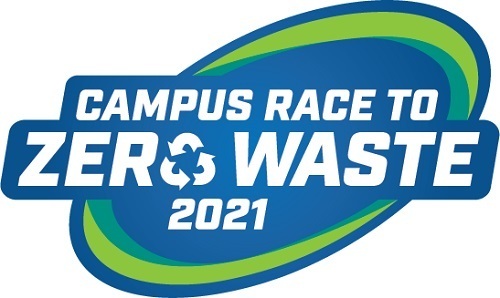
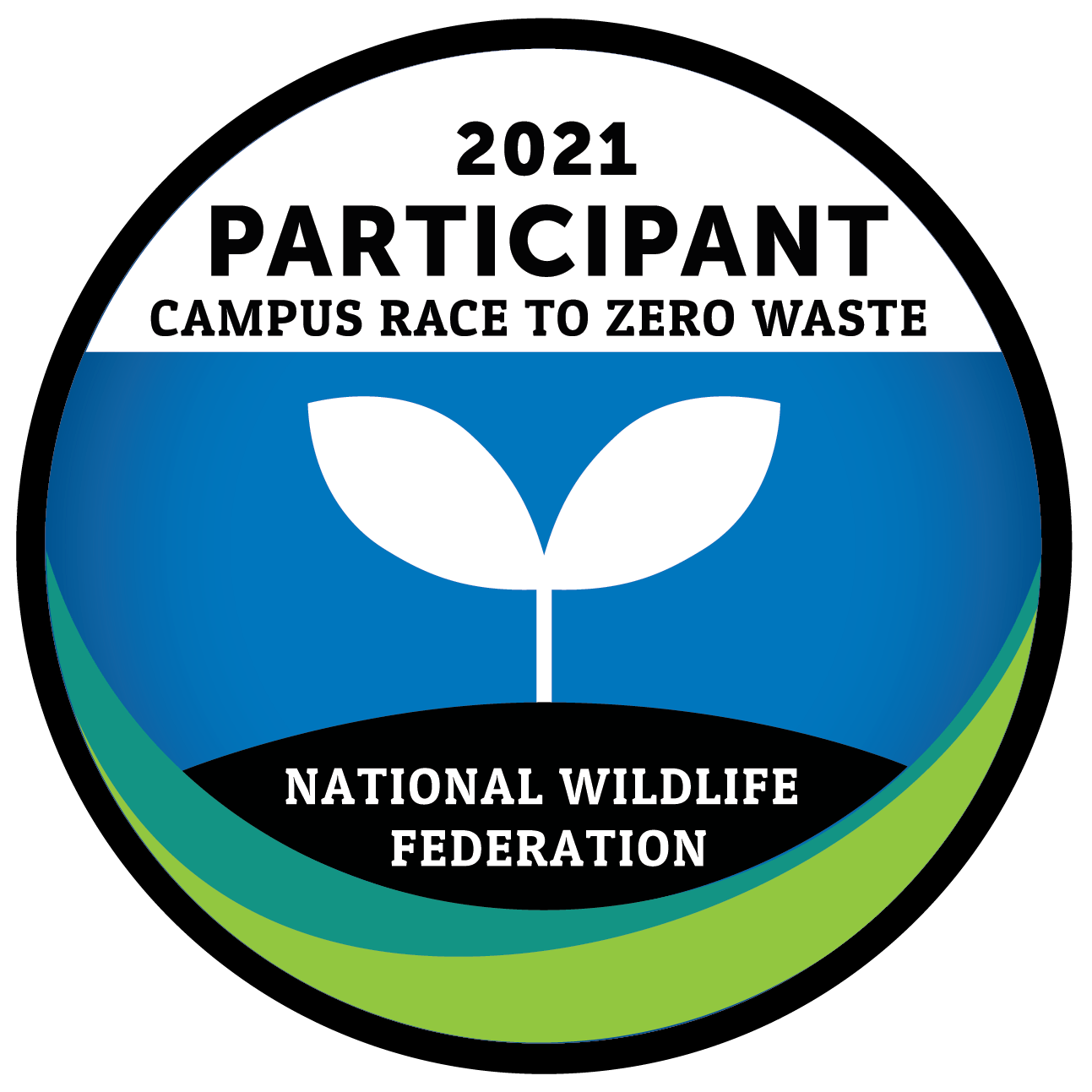

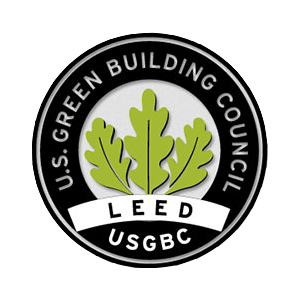
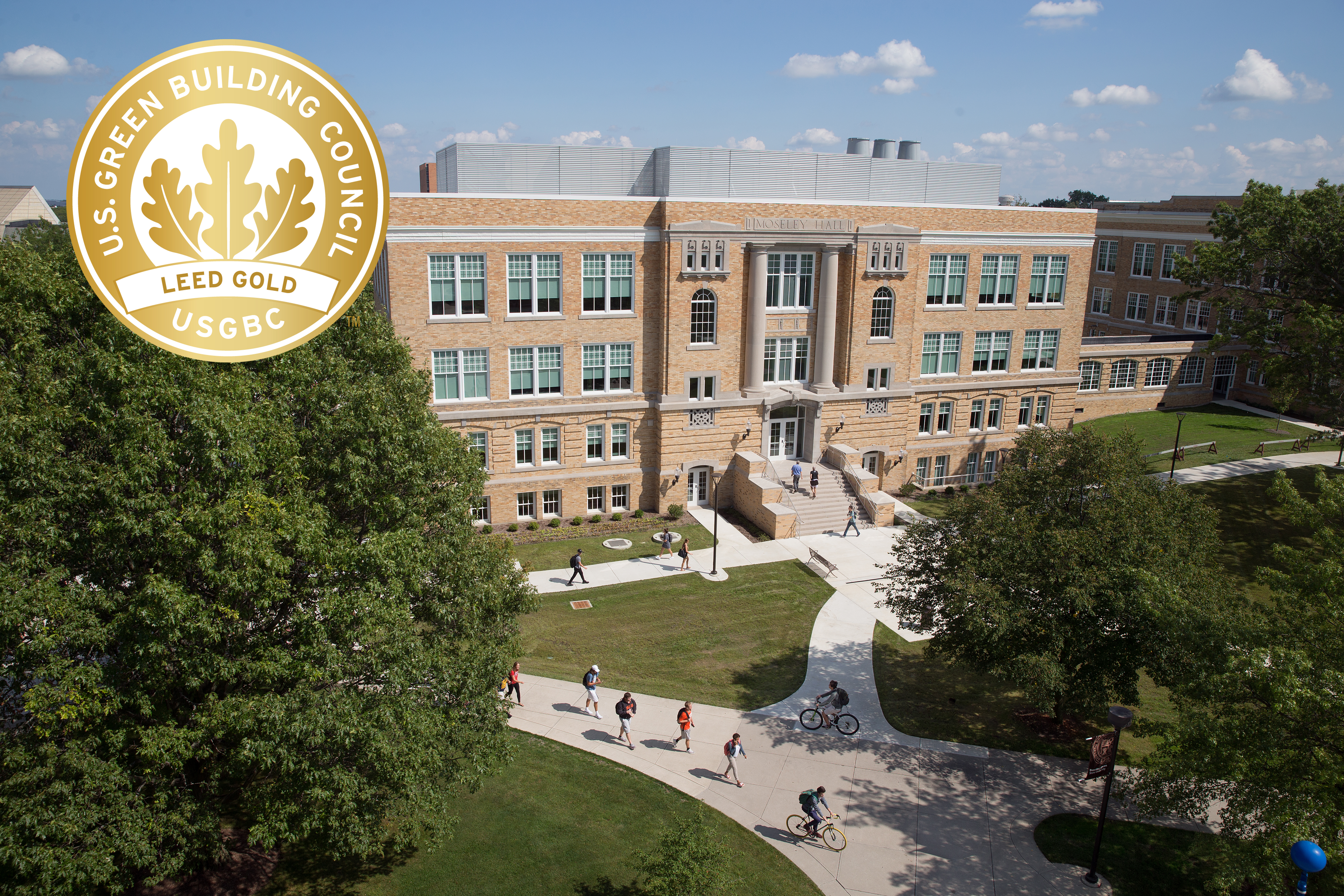
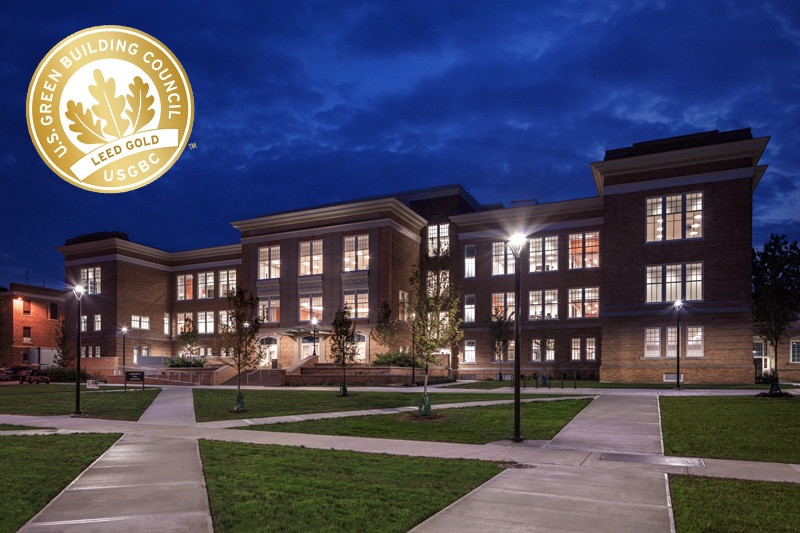

BGSU's "Green" Buildings:
LEED Certified
by Dr. Nick Hennessy - Sustainability Manager
BGSU signed the “President’s Climate Commitment” (PCC) in 2012, pledging to become carbon neutral and ultimately creating a Climate Action Plan that aims to achieve that neutrality by 2040. While LEED certified buildings first appeared on campus in 2010, BGSU committed, as part of the PCC, to strive for a minimum of “LEED silver” building designation for all major construction and renovation projects. But what are “LEED” buildings in the first place? How many do we have on campus and which buildings are they? The Campus Sustainability website provides that information:
Click Here
Leadership in Energy and Environmental Design (LEED) is a system of designating sustainable building design, construction and operation administered by the U.S. Green Building Council. Through a point system based on what is included in any particular building, levels of platinum, (the highest level); gold, silver, and basic “certification” are obtained. LEED rankings are important, as they are evidence of an institution’s commitment to sustainability and lowering their carbon footprint, and thus, their impact on the Earth. There are a number of systems of tracking sustainability metrics and accomplishments that rely on LEED designations to differing degrees. Additionally, sustainable design and operation being what they are, an institution can expect to save money on the short and long term operation of a LEED building through greater energy efficiency and overall reduced use of resources, among other things.
What features do LEED buildings provide “points” on which lead to a LEED designation? The list is long. Are building materials obtained locally, rather than shipped long distances? What percentage of building materials are recycled or reused during construction? Does the design reduce the use of natural resources and materials, such as water, and how much natural light is used in the building? What about the use of renewable building materials in interior design, or items that might have lower carbon footprints, such as Interface carpet tiles? Does the building provide recycling to its users? These and many more features earn LEED points and the process is not always simple for a university to follow.
Yet, BGSU went from having no LEED buildings before 2010 to now having 12 projects/buildings as of February, 2021, with strong prospects for adding another very soon (Maurer Center in newly renovated Hanna Hall). Those buildings include the Stroh Center, Wolfe Center, University Hall, Moseley Hall, Kuhlin Center, Ohio BCI Building, Rec Center renovation, HHS renovation, Park Avenue Architecture Building, every building in the Greek Village, Oaks Dining Center and Carillon Place Dining Center. A “point sheet’ for each LEED project on campus is made available and linked to the Campus Sustainability website to show the many features and practices that led to that building’s green achievement. The entire process is shepherded by the Project Manager for each construction project on campus, situated in the Office of Design & Construction. The Project Manager works closely with a designated LEED professional and architect during the construction process to monitor the points being attempted and ultimately obtained. Currently a mixture of LEED Gold, Silver and Certified buildings, perhaps a LEED Platinum building will be in BGSU’s future!
Where Are They Now?!
by Max Frost - Sustainability Assistant
Over the years, many interns have walked in and out of The Office of Campus Sustainability doors. These interns have made major contributions and impacts that have marked successful milestones for the Office of Campus Sustainability. We wanted to know what these interns have been up to and how the work they did as an intern has impacted their lives. Therefore, we started the newsletter series- “Where Are They Now?!”
In this month’s feature, the Office of Campus Sustainability reconnected with former intern Jeff Kellermeyer.
Jeff Kellermeyer | Campus Sustainability Intern, 2013 – 2014
Starting in 2013, Jeff took on a multi-faceted role within the Office of Campus Sustainability where some of his many duties ranged from coordinating recycling initiatives and waste reduction programs on campus to conducting outreach to mobilize and educate our campus community! Although his internship with Campus Sustainability ended in 2014, just prior to the creation of BGSU’s Climate Action Plan, Jeff was certainly laying the groundwork for our office to begin its implementation!
While his undergraduate path at BGSU began with Environmental Science, Jeff says that his journey ultimately finished with a degree in Economics from the College of Business Administration. Nowadays, Jeff Kellermeyer is a Reporting Analyst / Data Engineer at BankMobile where he conducts data science to help clients and stakeholders. Even in his current position, Jeff says that his experience with Campus Sustainability has followed him throughout the years:
“The time spent in the office sharpened so many different skills – organization, speaking, knowledge on sustainability practices/initiatives at a college level, a greater appreciation for butterfly bushes, and the difficulties of growing strawberries.” Jeff says, “The experience is one that follows me or I take with me always. I was lucky to put my time into the Office and work on worthwhile initiatives.
When asked if his background in Economics has enhanced his perspective on other facets of sustainability, Jeff says that it can be a worthwhile endeavor to understand the workings of the economy for someone who is interested in sustainability and environmental initiatives. “An economy that can support people in a sustainable way is a good thing,” he remarks.
The thing that inspired Jeff to work with Campus Sustainability in the first place was his love for nature and all of its plants, animals, and stars. “I just feel better when able to integrate time outdoors into my life,” he says. “Sustainability seems so linked – Are we being good stewards? I wanted to get involved and put my energy and time into the office.” Finding ways to harmonize with our environment and the people around us sparked an interest in Jeff that led to his internship with the office!
As a Campus Sustainability intern, Jeff had a wide variety of responsibilities! Some of his achievements included managing successful waste reduction programs, such as WYMO and Green Tailgating, researching new sustainability initiatives for BGSU, and putting together creative art projects and fun DIY workshops on campus to bring awareness of sustainable living to our fellow falcons. For example, during one of Jeff’s workshops, students were able to make their own garden boxes out of reclaimed wood, which was sourced from the building that is now known as the Kuhlin Center!
Some of his most fond memories with Campus Sustainability, however, were his days tending to the garden on the Oaks Green Roof and removing invasive species of plants on the edge of BGSU’s campus.
As our interview wrapped up, Jeff had a piece of advice for students who are interested in sustainability or environmental careers, but may not have environmental backgrounds.
“Get involved wherever,” he says. “Not being an environmental student doesn’t mean you can’t also get involved. If not the Office of Campus Sustainability, get connected or involved with something that lets you feel like you are being a positive impact on the people or world around you.”
Jeff concluded our interview with some words of inspiration, saying, “[I] encourage any reader to engage, get involved, and find things that promote their own health and happiness: Family, friends, art, nature, sports, good food, good rest, etc. Remember there are so many experiences to be had and possibilities to consider.”
Do you have any special memories of Campus Sustainability interns? Let us know at Greenbg@bgsu.edu.
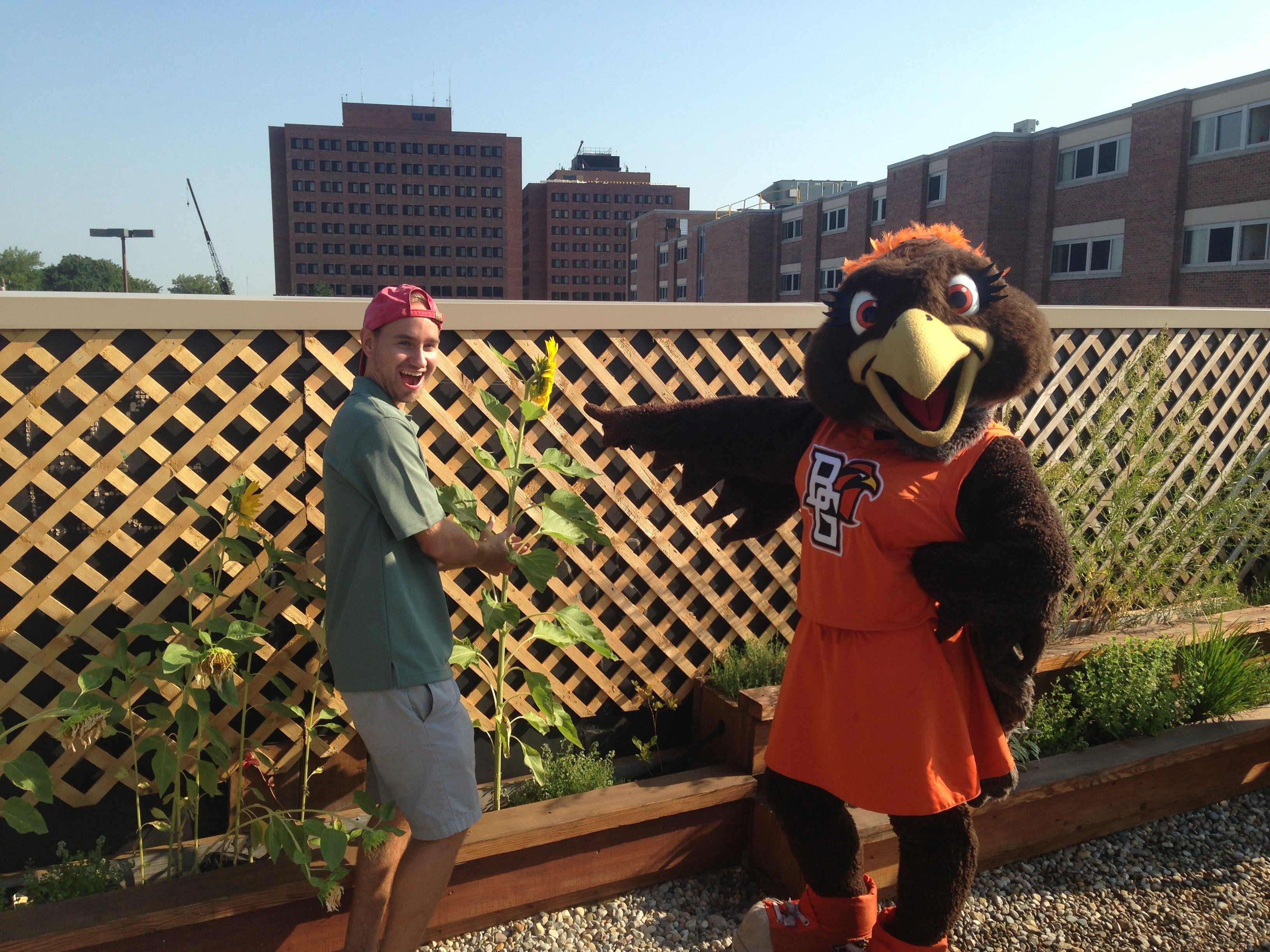
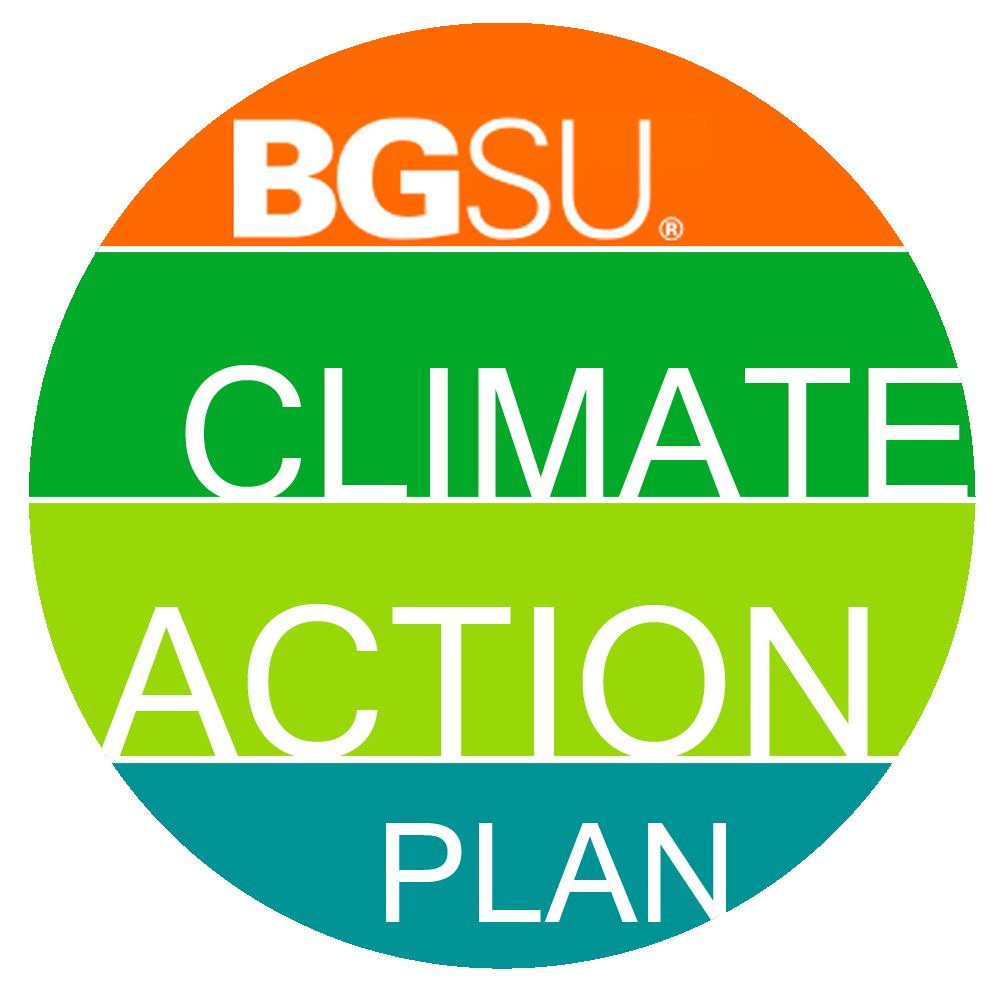
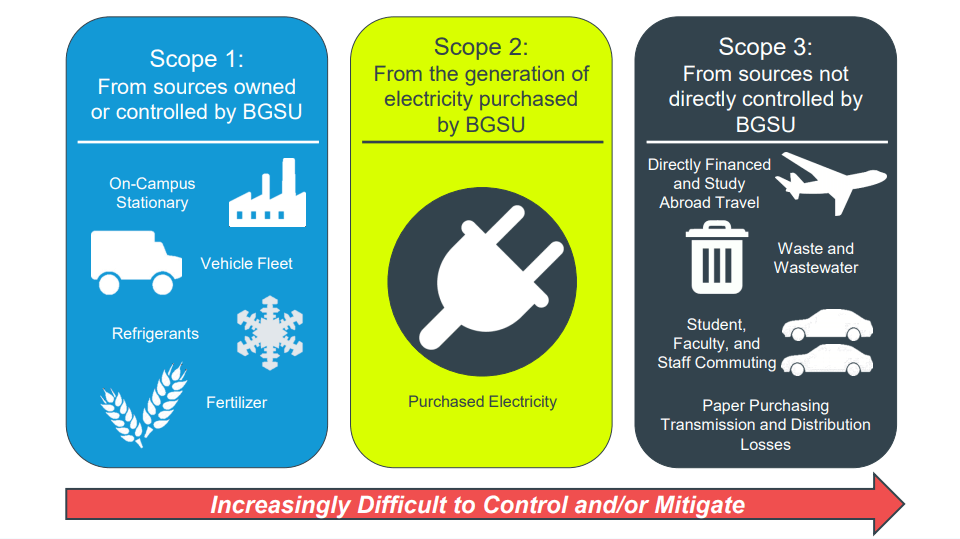
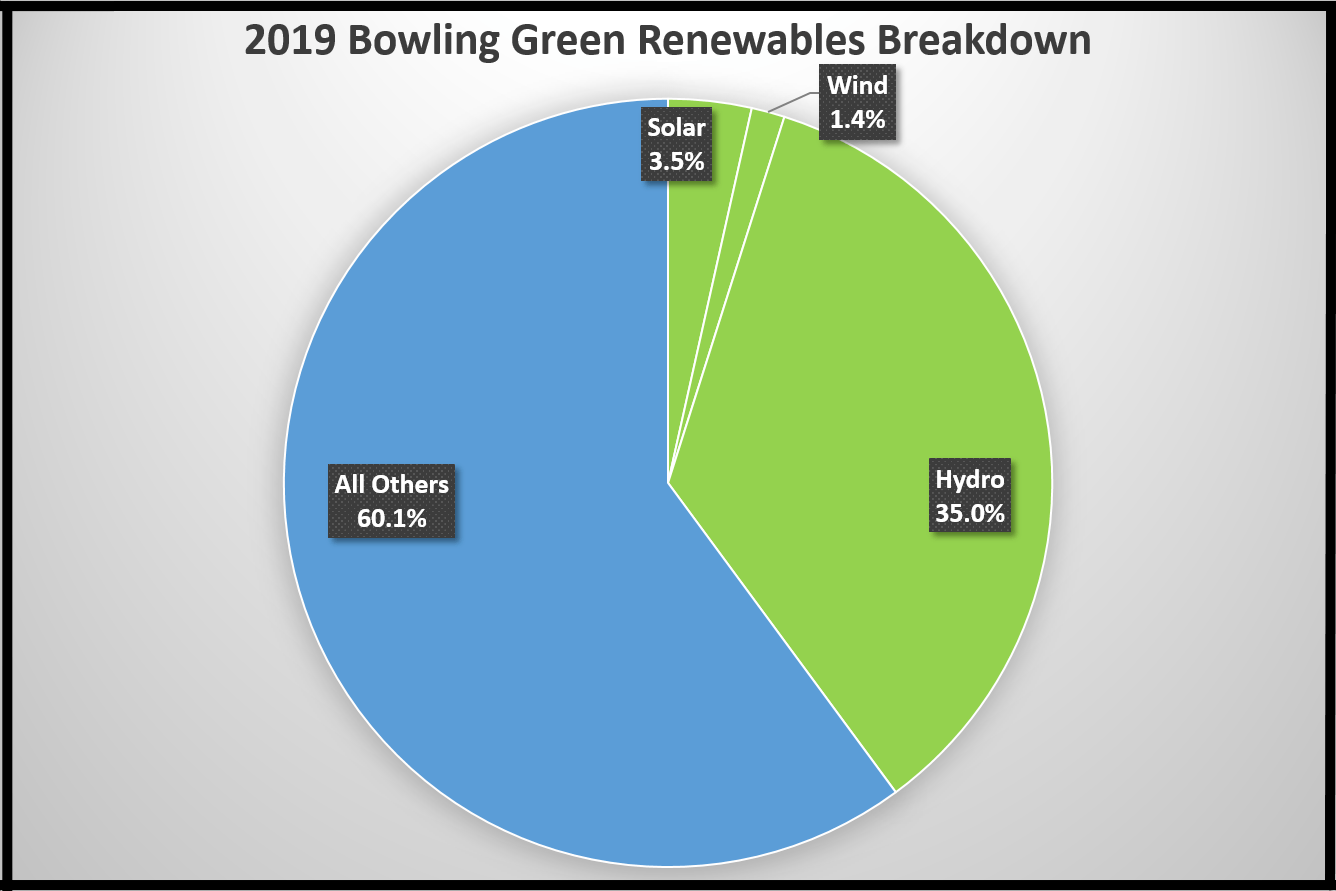
The Impact of BGSU's Emissions:
How Big is Our Carbon Footprint?
by Dr. Nick Hennessy - Sustainability Manager
What impact does BGSU have on the environment? The concept of the “carbon footprint” is used to figure that out annually. In the case of BGSU, a carbon footprint is the total greenhouse gas (GHG) emissions caused by our collective operations/activities. Greenhouse gases include carbon dioxide, methane, and others. Since some GHGs are more capable of creating damage, a “common denominator” is used when adding up a total. So total emissions are expressed as an actual figure of volume of “carbon dioxide equivalent”. It’s a way for us to figure out how we are doing in reducing those emissions, which is the goal of BGSU’s Climate Action Plan. We can actually compare ourselves to other institutions as well as see how we are progressing with our own goals. Because to put it simply, producing GHGs and the impact of those emissions on climate change is a really big problem. BGSU has acknowledged its role in and obligation to reduce those emissions to the point of neutrality. Also, as an institution of higher education, we can share information about emissions reduction with the community and help others to understand their role in reducing them.
But measuring a carbon footprint isn’t like figuring out your shoe size; it’s a fairly lengthy and ongoing process. How do we do it? You might wonder where our “emissions” come from, since we haven’t burned coal in our heat plant since 1996 (our heat plant as operated on natural gas since then, and the “smokestack” was taken down). The bulk of BGSU’s emissions come from “purchased electricity” (which by law comes from the City of Bowling Green, which in turn obtains this from the AMP-Ohio cooperative. And while about 40% of that power comes from sustainable sources such as solar, wind, and hydroelectric, a large source is from coal-fired power plants in other states.
Heat plant operations (using natural gas, a non-renewable power source), emissions from BGSU’s fleet of vehicles (trucks, cars, vans, etc.), use of fertilizers, the purchase of paper, trash sent daily to the landfill, including food waste (where methane gas is produced), travel (both air and vehicular), and student/faculty/staff commuting also contribute to our emissions in a direct way. Some of these sources can be controlled and reduced by our actions, and some are much more difficult to control.
Data from all of these sources is collected by Campus Sustainability, through the cooperation of many other offices on campus. That data is then entered into an online platform that includes a “built in” calculator which transforms the data into a figure of “carbon dioxide equivalent” that is a universal form of measurement and voila, we have our carbon footprint!
The entry of data is a fairly constant procedure, and reporting is done annually and reported online. BGSU has been measuring its carbon footprint in this way since 2010 and has reported an overall decrease in carbon dioxide equivalent since 2011. The 2020 measurement showed a percentage decrease of 18% since we first began measuring. That means that we must strive for greater percentage decreases annually in order to reach our stated goal of the year 2040. This includes the acknowledgement that we will need to purchase some “carbon offsets to reach complete neutrality, since we will likely always have some form of travel, commuting, and other operations.
To learn more about this process, check out BGSU's Climate Action Plan!

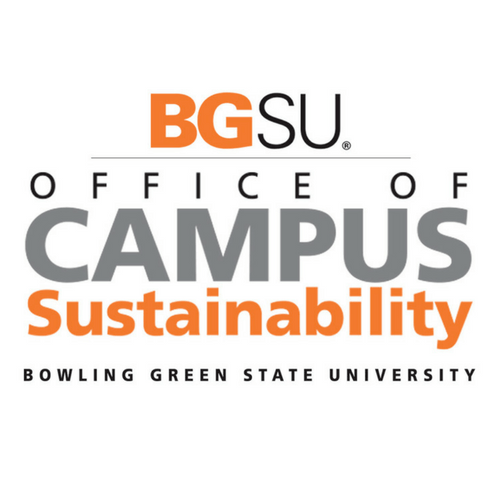
Sustainability Questions & Suggestions
Do you have any questions, comments, concerns, or suggestions related to sustainability? If so, feel free to contact us at greenbg@bgsu.edu.
Alternatively, you can reach us on Facebook, Twitter, or Instagram @GreenBGSU.
We look forward to hearing from you!
Like staying up to date on all of BGSU's sustainability updates? Be sure to subscribe to this newsletter to get it sent to your email inbox each month!
Updated: 01/26/2024 03:46PM
